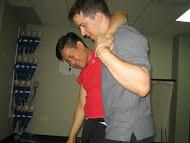Being bitten by a snake can be life threatening, but this is not always the case. Some snakes are not venomous, and hence most victims can survive the attack. However, it is important to know how to identify snakebites and the first aid steps to take when trying to help a bite victim.
Signs and Symptoms to Look Out for

Victims of snakebites need emergency medical help, especially in the case of poisonous snakes. How fast the victim receives help can mean the difference between life and death. Sometimes a snake may bite you when there is no one around to help. Whether a snake bites your or someone else, it is important to know how to identify this kind of attack. The main signs and symptoms to look out for are:
- A pair of bit marks at the wound
- Swelling and redness around the puncture wound
- Serious pain around the wound
- Blurred Vision
- Difficulty in breathing
- Increased perspiration
- Numb tingling on the face and limbs
How to Administer Snake Bite First Aid
It is imperative to dial 911 or call for an ambulance after a snake attack incident. The following is what one should do to help a snakebite victim as emergency help arrives.
- Make sure not to panic. The victim should be moved away from the snake to prevent further attacks.
- The activity level of the victim should be minimized. This will reduce the rate at which the venom spreads in the body.
- The bite or wound must be placed lower below the level of the heart. This will also help to reduce circulation to the bite area.
- If you are sure that the snake is not poisons, apply puncture wound first aid.
- It is important to know what type of snake was behind the attack. Hence, look at the color and shape of the snake so that you can give this information to medical personnel when they arrive.
There are certain things that could exacerbate the victim’s condition and hence you should avoid them. For instance, do not:
- Suck out the venom with your mouth. Not only is this dangers to you but the bacterial in your mouth might infect the wound.
- Take alcohol or a painkiller.
- Apply ice on the wound.
- Tie a tight bandage around or near the wound.
- Try to catch or kill the snake if you are untrained on how to do so as this could put you in danger.
Keep in mind that is vital to help medical personnel know what kind of snake bit the victim. If possible, take a picture of the snake, as this will help the doctor to choose the right anti-venom. In case you live in an area where snakes are common, it is use to have a snakebite first aid kit around.
